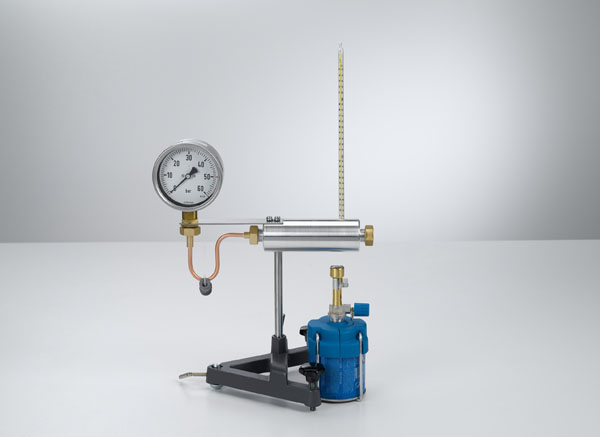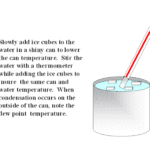Measuring vapour pressure is very difficult without complex laboratory instrumentation. However, it can be relatively easily derived from more measurable properties. The ratio between the weight of water vapour actually present in the air and the weight it can contain when saturated at the same temperature is called the relative humidity of the air. It is usually expressed as a percentage. As the vapour pressures are set by the quantities of vapour in the air, the relative humidity is also given by the ratio between the actual vapour pressure and the saturation vapour pressure at the same temperature. Thus, if the temperature and relative humidity are known, the actual vapour pressure can be calculated from the product of the relative humidity (expressed as a decimal) and the saturation pressure.
These saturation vapour pressures and the corresponding quantities of water in the air can be read directly off the psychrometric chart or from tables.
Example
An air-conditioned room at sea level has an indoor design temperature of 75°F and a relative humidity of 50%. Determine the humidity ratio, enthalpy, density, dew point, and thermodynamic wet bulb temperature of the indoor air at design condition

Solution
Since the air-conditioned room is at sea level, a psychrometric chart of standard atmospheric pressure of 14.697psi should be used to find the required properties.
1. Plot the state point of the room air at design condition on the psychrometric chart. First, find the room temperature 75°F on the horizontal temperature scale. Draw a line parallel to the 75°F temperature line. This line meets the relative humidity curve of 50% at point 1, which denotes the state point of room air (refer figure above).
2. Draw a horizontal line toward the humidity ratio scale from point 1. This line meets the ordinate and thus determines the room air humidity ratio W = 0.0093 lb/lb.
3. Draw a line from point 1 parallel to the enthalpy line. This line determines the enthalpy of room air on the enthalpy scale, h1 = 28.1 Btu/lb.
4. Draw a line through point r parallel to the moist volume line. The perpendicular scale of this line indicates v = 13.67 ft3/lb.
5. Draw a horizontal line to the left from point 1. This line meets the saturation curve and determines the dew point temperature, Tdew = 55°F.
6. Draw a line through point r parallel to the thermodynamic wet bulb line. The perpendicular scale to this line indicates that the thermodynamic wet bulb temperature T* = 62.5°F.


